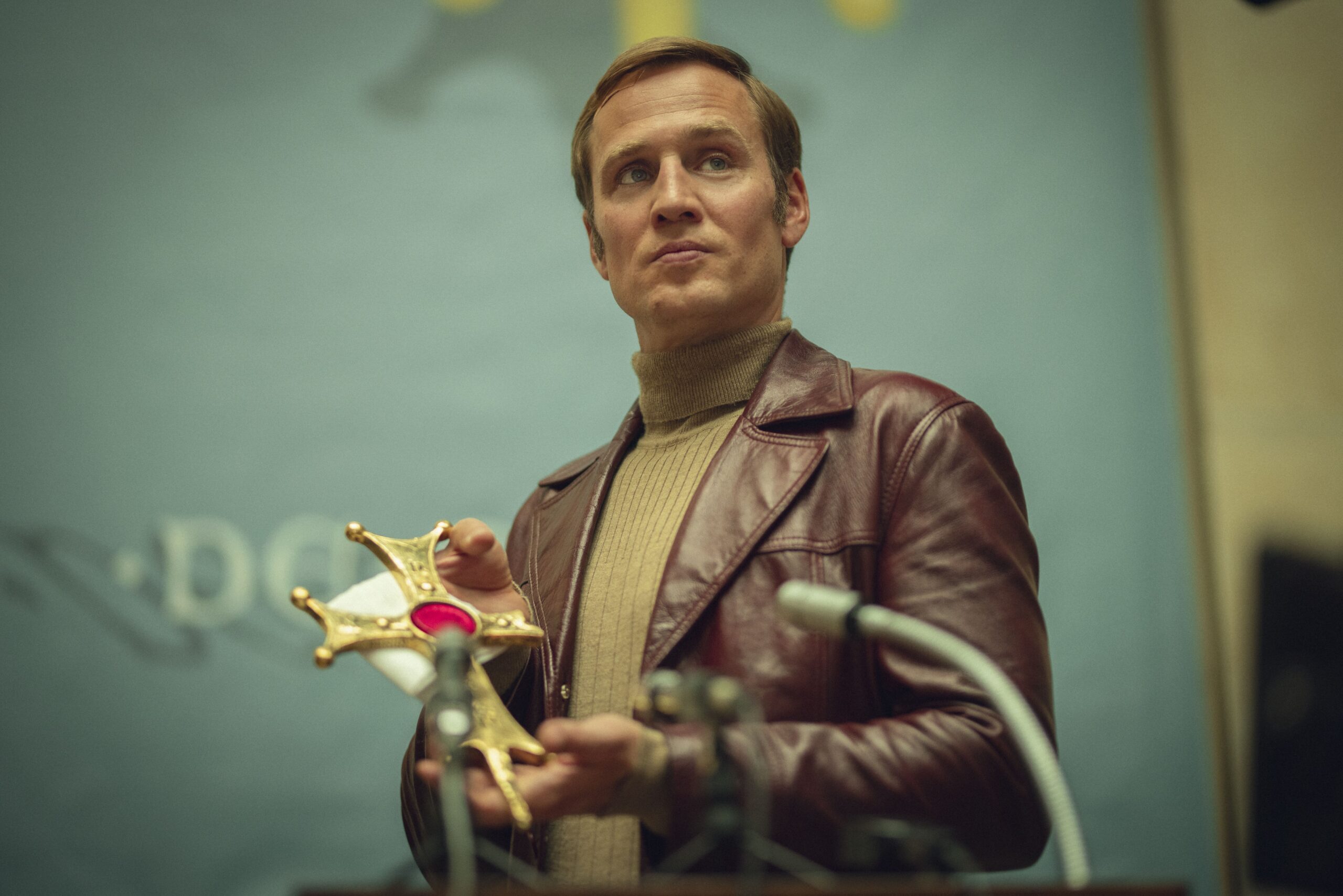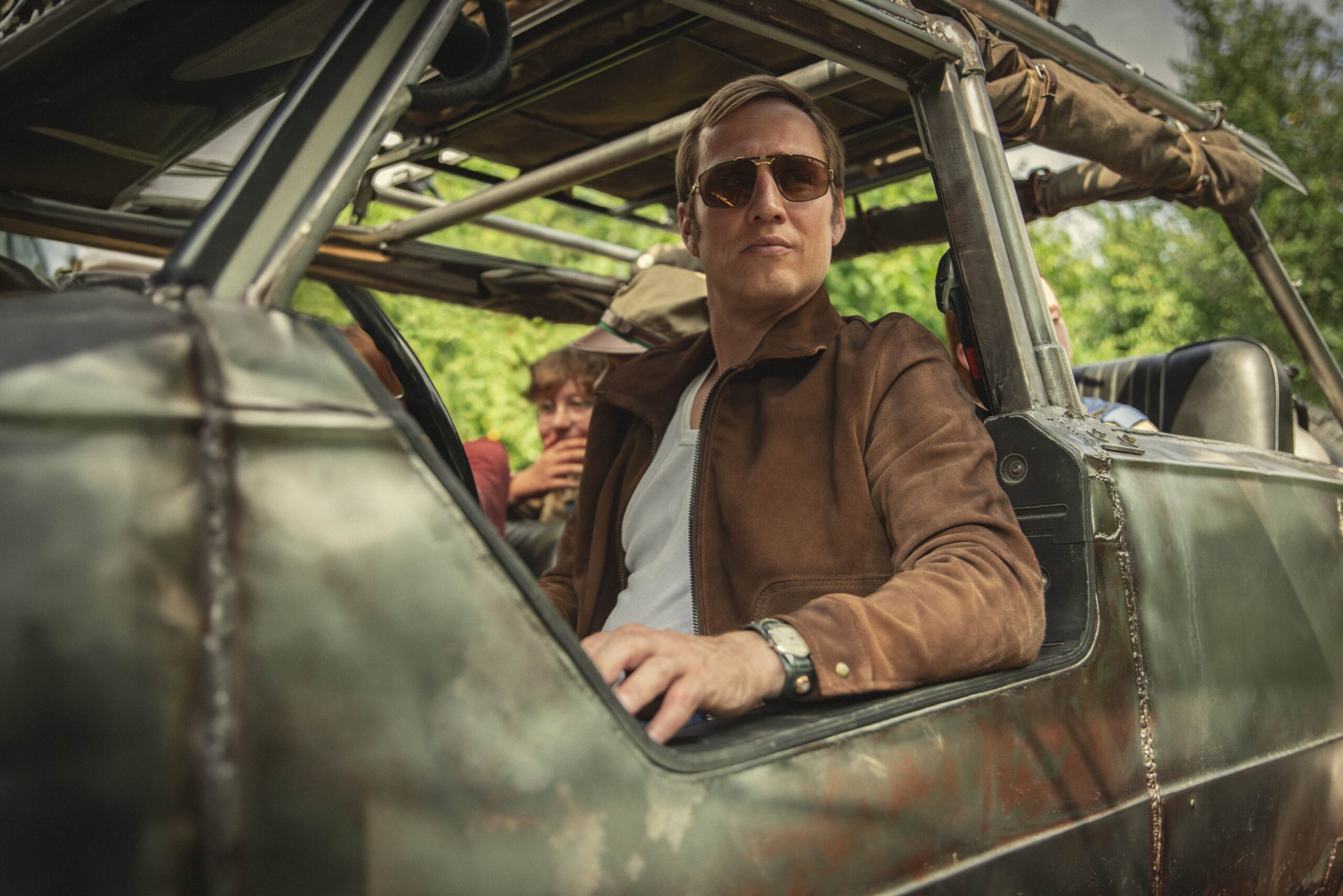Exporting local nostalgia – Polish past for global audiences
Sylwia Szostak / SWPS University

Nostalgia, like the economy it runs with, is everywhere. But it
is a cultural practice, not a given content; its forms,
meanings, and effects shift with the context – it depends on
where the speaker stands in the landscape of the present.
Kathleen Stewart[1]
Selling nostalgia
Nostalgic content has become a pervasive component of our mass media of late. Along with reruns, reboots, revivals, and expansive streaming libraries of past shows, there has emerged a genre known as nostalgic television, that is intended to evoke a feeling of yearning within audiences for a previous time period to which they may feel attached. Netflix didn’t invent nostalgia, but current streaming technologies have no doubt perpetuated this significant nostalgia cycle. Particularly, the streaming juggernaut Netflix fuels audience desire for nostalgic content, as both a platform for audiences to rewatch beloved content from the past and a creator of original content with a nostalgic vibe. Variety calls Netflix’s “nostalgia strategy” an attempt to attract and keep subscribers who might be swayed by a reanimated chunk of their childhoods. And Netflix has had some spectacular successes with this, as nostalgia has certainly contributed to the success of shows like Stranger Things.
Exporting nostalgia
Television is arguably being used as one of the prime sources for generating nostalgia today and Netflix appears to be leading the pack. This nostalgia strategy is prominent in Netflix’s overseas markets, such as Poland, where the streamer is producing a lot of original Polish-language films and series. This of course isn’t the first time the industry has tapped into audience’s sense of nostalgia. But this time, nostalgia can be exported from peripheral markets to global audiences, which can be problematic for local creators. Keep in mind, nostalgia is a subjective experience; what is nostalgic for some audiences might not be nostalgic elsewhere. What’s crucial, at least from this perspective, is that nostalgic television must rely on culturally recognized markers, such as generational symbols that have been exported globally with American pop culture. What happens when Netflix produces local nostalgia television in its peripheral market but wants to make it culturally accessible to global audiences at the same time? Poland serves as an excellent case study.

Polish socialism for global audiences
In 2023, Netflix dropped a fresh adaptation of Zbigniew Nienacki’s well-known Polish adventure novel featuring the intrepid treasure hunter known as “Pan Samochodzik” (Mr. Car), a story set sometime in Poland’s socialist past. This Netflix commission demonstrates that nostalgia television is also Netflix’s programming strategy in its peripheral markets but, what’s more, it proves that, despite Netflix’s assurance that it commissions local content for local markets, content is actually being made with global viewer in mind.
Producing for Netflix required local creators to fit this book adaptation into the generic requirements of the young adult adventure genre and to consider the global distribution model. It was clear from the outset that this Polish Netflix commission would be dropped in all global markets simultaneously. At the same time, local producers as well as Netflix decided that the original setting of the story—an unspecified timeframe located in Polish socialism—was a perfect opportunity to further explore the nostalgic television genre. The executive producers immediately looked to Netflix’s best nostalgia TV ever made, namely Stranger Things, as a reference for how to make nostalgia appealing, entertaining and young-adult appropriate. In a personal interview, Jerzy Dziegielewski from Warsaw-based Orphan Studio reveals:
The Duffer Brothers successfully created a TV series set in 1980s by relying on symbols that have stood the test of time, such as the Dungeons & Dragons game, BMX bikes, culturally powerful symbols that evoke very positive associations. We wanted to go down the very same path. I did not want to focus on the drabness of Poland’s socialist past, it just doesn’t seem attractive to me. I wanted to include symbols that seemed cool to us, anything that triggered positive emotions.
Jerzy Dziegielewski
In this sense, although we might safely assume that Polish socialism was nothing like 1980’s America, nostalgia in Pan Samochodzik was constructed much like it was in Stranger Things, triggered by generational symbols that were unique to the era such as music, setting, fashion, architecture and other period markers. In eliciting the nostalgia of socialism, historical accuracy was not the main frame of reference for the Polish creators, but rather the mood that selected symbols were able to generate. This emphasis on positive mood is not surprising as, after all, it’s young adult entertainment. No wonder there is no mention of secret police, authoritarian government or daily struggles of everyday life under socialism. The only reason we know it’s supposed to be a socialist time is the clothes, the music and the general nostalgic ambiance. Director Antoni Nykowski considers this somewhat selective approach to history a new opportunity for local creators:
It turns out that history does not necessarily have to be confined to the framework of the dominant discourse. Streaming has brought new opportunities for the exploration of the past, beyond institutional narratives. Polish history can be used as a backdrop for adventure stories that do not have to adhere to traditional views of history.
Antoni Nykowski
In this instance, the creative choice of what should constitute Poland’s past as a backdrop was to a large extent determined by what would be appropriate for the global viewer. So as not to deter international engagement, iterative refinement of the script ensured the exclusion of obscure historical references or delving into topics that might confuse international viewers. In the cinematic terms, there are no visual identifiers in the film that directly specify the location as Poland during the socialist period. The film was shot not only in Poland but also in Latvia, specifically in Riga and Liepaja. This wasn’t a challenge because the assumption is that Riga can easily pretend to be Warsaw. The main thing for the creators was, in their own terms, that the image looks like “behind the Iron Curtain”. That was enough of a context for the international viewer.

Marvel from behind the Iron Curtain
When the director began the world-building exercise for Pan Samochodzik, what Netflix hoped would become their local franchise, he thought about how to make this Polish story set in a historical background appealing to international audience.
This imperative for the film to resonate with a global audience influenced my vision from the get go. I created what we started calling the “Marvel behind the Iron Curtain”. In this universe, I included elements that were meant to convey this sense of local nostalgia but within a frame of global media franchise that would make it understandable for a global viewer. The mechanics of Marvel are well-known around the world – take Captain America, for example. You can easily place him in the backdrop of World War II and it isn’t strange at all when a guy with a shield pops out and starts fighting Nazis in a strange outfit. Everyone gets it because the context of World War II is easy to grasp for a viewer in all parts of the world, and global audiences are familiar how Marvel works. With Pan Samochodzik I wanted to apply a similar logic. Netflix strongly emphasized the inclusivity of symbolism in the film, so I wanted to refer to symbols that very broadly stand for communist reality and what the world was behind the Iron Curtain, decodable and readable for a global viewer. The main character was supposed to have this Bond-esque style, but his resources had to be from “behind the Iron Curtain.”
Antoni Nykowski
In an attempt to build a local nostalgia-infused franchise and make it locally significant and exportable at the same time, Polish creators had to translate the source material into a universal cinematic language — which in this case proved to be American-style entertainment, as creators looked to the MCU and Stranger Things for possible inspiration and blueprints. Kalina Lach and Paulina Sieniarska, the costume designers, reavealed a similar logic, relying on symbols that the global viewer is familiar with.
A good reference for us was Marlboro Man, very iconic. It would have been hard to rely on local niche pop cultural references as back then we were living in an era of scarcity and the film was not supposed to reflect how hard it was back then. Therefore, we referred to the iconic figures of global popular culture — James Dean or Steve McQueen. We needed a man who is confident, handsome, understands fashion, exudes a bit of toxic masculinity. He had to look good in Netflix terms, in current times.
Kalina Lach and Paulina Sieniarska
What we can gather from these auto-reflexive narratives is that some aspects of Polish history aren’t sexy enough and needed a Western culture-style upgrade to be exportable. Whether you like this type of cultural appropriation or you find lack of local flavour disturbing, you can’t deny that the main character looks all the better for it.

This brief discussion demonstrates that producing local Netflix originals, in some cases, requires a significant degree of delocalization. In the dynamic landscape of contemporary streaming media, characterized by the viewer’s propensity for rapid service-switching in response to cognitive dissonance, strategic decision-making pivots towards the exclusion of complexities and fostering a universally resonant cinematic experience. The creators of Pan Samochodzik reference the global cultural canon to embed their narrative within global collective memory regarding socialism, aiming to make the film accessible to a global audience. This makes you wonder, how local are local Netflix commissions?
Image Credits:
- Pan Samochodzik (Mateusz Janicki) and Anka (Sandra Drzymalska) in the car (Netflix Media Center)
- Promo poster for Pan Samochodzik i Templariusze (Mr. Car and the Knights Templar)
- Mr. Car and the Knights Templar (2023) trailer
- Pan Samochodzik with the knights templar cross (Netflix Media Center)
- Titular character Pan Samochodzik (Netflix Media Center)
- K. Stewart, Nostalgia – A Polemic, “Cultural Anthropology” 1988, nr 3, s. 227. [↩]